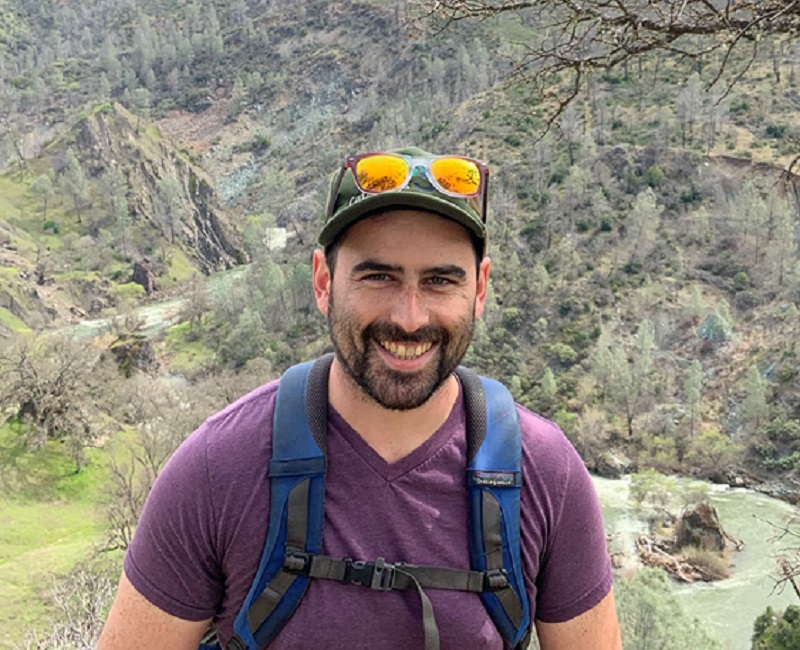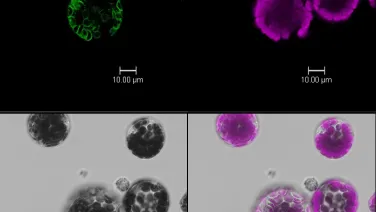PS Webinar Series: Building a Bacterial CO2 Concentrating Mechanism
Many photosynthetic organisms employ a CO2 concentrating mechanism (CCM) to increase the rate of CO2 fixation via the Calvin cycle. CCMs catalyze ≈50% of global photosynthesis, yet it remains unclear which genes and proteins are necessary for a CCM to function.
Speakers
Event series
Content navigation
Description

Abstract -Many photosynthetic organisms employ a CO2 concentrating mechanism (CCM) to increase the rate of CO2 fixation via the Calvin cycle. CCMs catalyze ≈50% of global photosynthesis, yet it remains unclear which genes and proteins are necessary for a CCM to function. Based on a genome-wide screen in an H. neapolitanus, a proteobacterium that depends on a CCM for autotrophic growth, our lab identified a cluster of 20 genes that, in principle, contains all the activities required for a bacterial-type CCM. I will describe how we constructed a functional CCM in a non-native host by expressing these 20 genes in an engineered E. coli strain. A functional CCM enabled E. coli to grow by fixing CO2 from ambient air into biomass, with growth depending on known CCM components in a predictable manner. Bacterial CCMs are therefore genetically compact and readily transplanted, rationalizing their presence in diverse bacteria as the outcome of horizontal transfer. Reconstitution also enabled genetic experiments refining our understanding of the CCM, thereby laying the groundwork for deeper study and engineering of the cell biology supporting CO2 assimilation in diverse organisms. More broadly, in the spirit of the famous Feynman quote “What I cannot create, I do not understand,” I hope to suggest that working at the interface of “synthetic biology” and “basic research” is an exciting and intellectually profitable way to pursue scientific questions.
Biography - Avi recently graduated from the Molecular and Cell Biology PhD program at UC Berkeley, where he was an NSF fellow in the lab of David Savage and studying the CO2 concentrating mechanism. Avi gets excited when physical and mathematical principles help explain the behavior and evolution of cells, organisms and ecosystems. He's motivated by environmental questions and hopeful that principled approaches to biological engineering will ameliorate the environmental degradation that humanity has collectively wrought. Avi is starting a postdoc in the labs of Dianne Newman and Rob Phillips at Caltech in the fall.
Location
When: Aug 12, 2020 12:00 PM Canberra, Melbourne, Sydney
Topic: Building a Bacterial CO2 Concentrating Mechanism
Please click the link below to join the webinar:
https://anu.zoom.us/j/95055885983?pwd=QmxiVTNYaW1hTUZUZHRSamxlUzhYQT09
Webinar ID: 950 5588 5983
Passcode: 777205
Or iPhone one-tap :
Australia: +61731853730,,95055885983#,,,,,,0#,,777205# or +61861193900,,95055885983#,,,,,,0#,,777205#
Or Telephone:
Dial(for higher quality, dial a number based on your current location):
Australia: +61 731 853 730 or +61 861 193 900 or +61 8 7150 1149 or +61 2 8015 6011 or +61 3 7018 2005
International numbers available: https://anu.zoom.us/u/abyX0ndIzs
Or an H.323/SIP room system:
H.323: 113.197.7.15 or 113.197.7.150
Meeting ID: 950 5588 5983
Passcode: 777205
SIP: 95055885983@113.197.7.15 or 95055885983@113.197.7.150
Passcode: 777205



